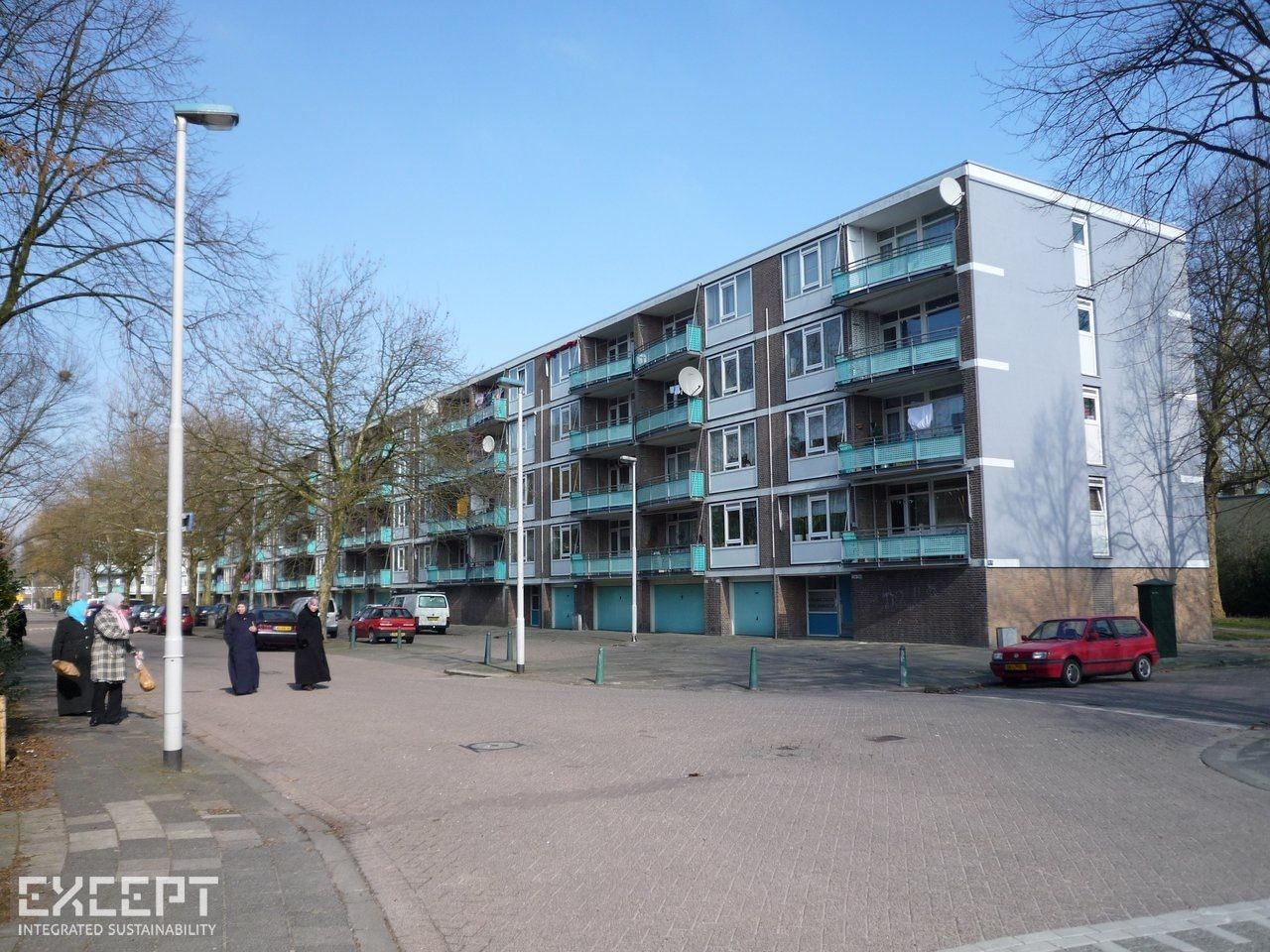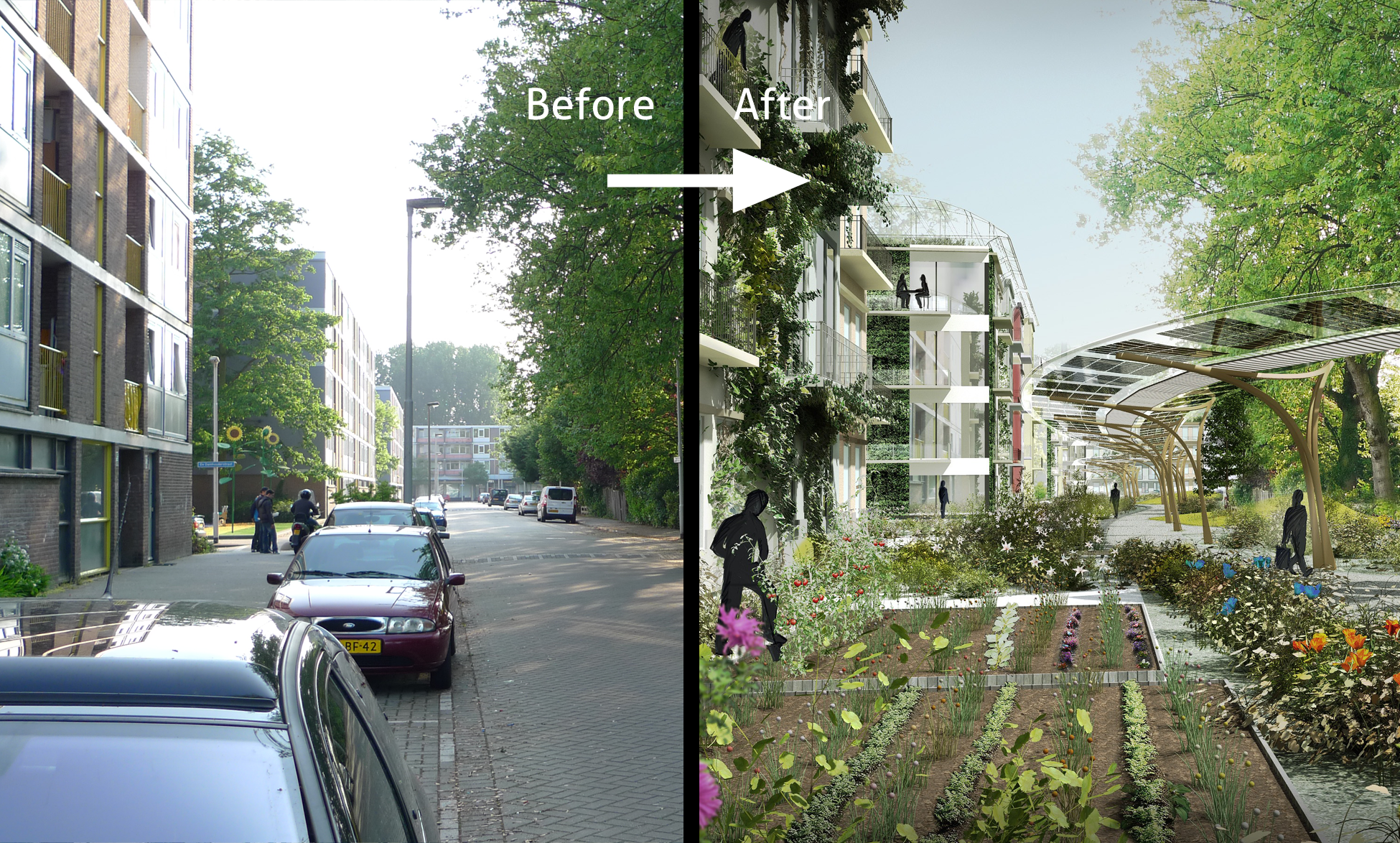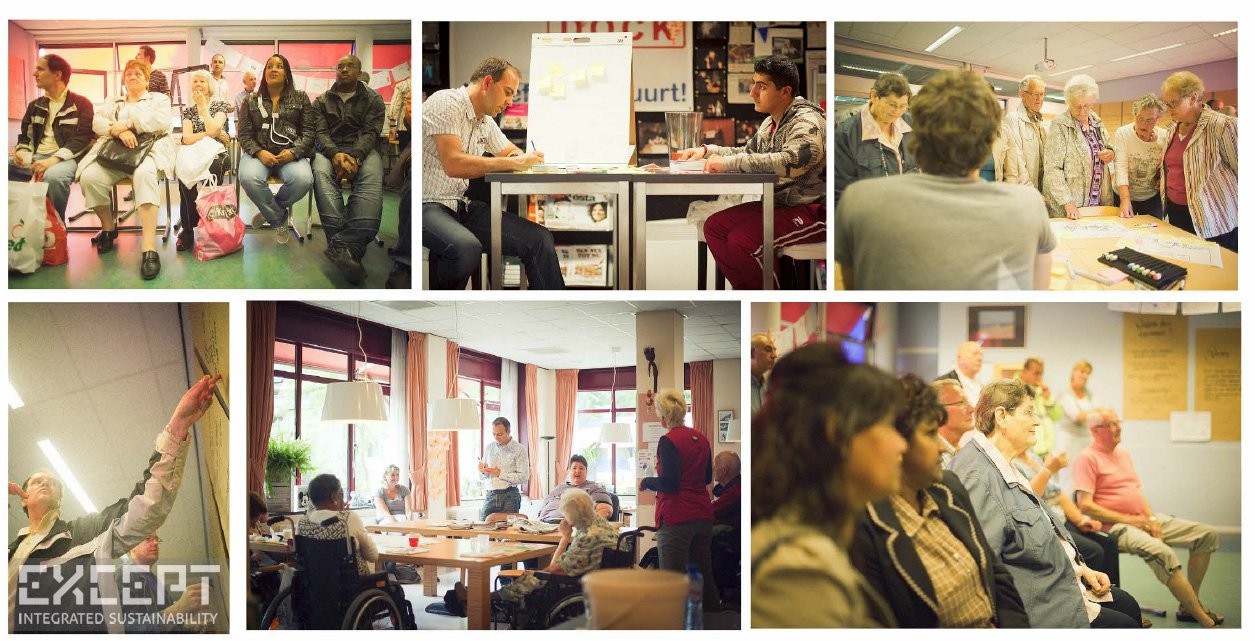


Sustainable Schiebroek-Zuid
Redevelopment of post-war social housing
Sep 01, 2010
This project introduced, for one of the first times, a complete sustainable transition plan for a large social housing area, towards self sufficiency, that is both realistic, feasible, and became wildly successful particularly on social impacts. It centers around the then-problematic post-war social housing area Schiebroek-Zuid in Rotterdam. The transition plan involved hundreds of residents in its creation, and laid down a 20 year roadmap for the adaptive redevelopment of the area in a physical, social, programmatic, and ecological sense. The plan applies innovative energy solutions, urban farming, social and economic programs, secondary currencies, and adaptive redevelopment strategies and provides a flexible and exemplary roadmap. Clients were housing developer Vestia and agricultural research network InnovatieNetwerk.
In this video, the Schiebroek-Zuid project is discussed from about 5:50.
As a first of its kind, the Sustainable Schiebroek-Zuid project provides a template approach to converting a commonly problematic post-war social housing typology into a beautiful, equitable, resilient, sustainable community. The neighborhood uses proven, standard technologies in innovative ways, combined with 'biological engines' to provide the district with water, electricity, heat, waste processing, and 70% of its food production.
The plan combines socio-economic programs and proven technologies to create a closed-loop urban metabolism. All energy and water are locally provided, and most wastes are handled on-site. Local agriculture is the "biological engine" that drives many aspects of the plan, such as energy generation, nutrition, education, recreation, social programs, and local economic activities.

Except drew on its integrated sustainable development approach, Symbiosis in Design (SiD), to develop an extensive set of measures, or 'ingredients,' which can be mixed and matched over time to achieve the end vision. These ingredients were designed in cooperation with stakeholders and residents. SiD facilitates and assures the integration of the many elements of sustainability in a cooperative framework.
The ingredients include social programs for neighborhood target groups such as the elderly, children, teenagers, immigrants, and entrepreneurs. A marketplace and community center will be central hubs for the new neighborhood activities. Meanwhile, flexible ateliers provide spaces for startup companies to be used as anything from craft workshops to offices and kitchens to storefronts. A local currency has been suggested to encourage local trade and incentivize energy-saving or waste reduction efforts.

The area can supply its required electricity and heat by utilizing biogas-fueled power plants, solar installations, and heat capture from rooftop greenhouses.
Edible landscaping throughout the neighborhood can use previously empty lawns while meaningfully connecting residents to their natural surroundings. A vital feature is that it renovates instead of demolishes most of the neighborhood’s existing buildings, reducing both the social disruption and environmental impact typically caused by neighborhood renewals that begin with demolition.
Contractor Vestia will start with implementing several ingredients from the plan. Except hopes, this project will serve as an example for the numerous social housing areas with similar typologies worldwide.
An in-depth article "Urban Evolution: the Case of Schiebroek-Zuid" was written about Schierboek-Zuid's transformative journey.
For the project, a vision book was developed and an ingredient book, both available for free and open source below (in Dutch). The ingredient book, counting almost 300 pages of details, calculations, examples, and solutions for all project categories.
Sept. 1, 2010
Head of Science, Industrial Ecologist
Industrial Ecologist
Except Integrated Sustainability
Industrial & Urban Ecologist
Except Integrated Sustainability
Communication Strategist
Except Integrated Sustainability
Senior Associate
Except Integrated Sustainability
Communication
Except Integrated Sustainability
Photography & Visualisation
Except Integrated Sustainability
Engineer
Atelier Ten
Urban Strategist
Posad
Environmental Design
Except Integrated Sustainability
Client Representative
Estrade / Vestia
Partner Representative
Innovatienetwerk / SIGN